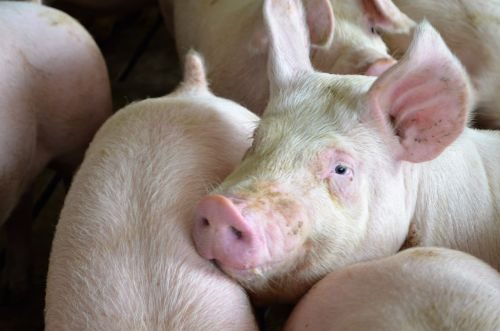Super-dosing of Phytase
Posted: March 3, 2017 | Written By: Gary Asche, Form-A-Feed Nutritionist

As third and fourth generation phytase enzymes started to be used commonly in feeds, we realized that phytate, the major storage form of phosphorus in plants, is much more of an anti-nutrient limiting performance of swine than just an underutilized nutrient.
One of the main reasons why phytate depresses performance is because it has a negative charge at a low pH (less than 2) as found in the stomach. As the pH increases through the small and large intestine, the negative charge of phytate increases. This causes phytate to react with positively charged minerals (calcium, zinc, and other trace minerals) reducing their availability to the pig. The level of phytate in young swine rations causes an increase in the calcium requirement by about 50% due to insoluble calcium-phytate complexes. Phytate also decreases the efficiency of enzymes in the stomach that digest protein which lowers protein digestibility. Furthermore, phytate also even decreases amino acid absorption in the small intestine.
Traditionally, phytase was fed at low levels (200-500 ftu/lb.) to simply release phosphorus from phytate and make it available to the pig. Data over the last few years has shown improved gain and feed conversion in swine fed higher levels of phytase (greater than 700 ftu/lb. of phytase). With super-dosing, the goal is the complete breakdown of phytate rather than just the partial breakdown and release of phosphorus. The larger or more complete breakdown of the anti-nutrient phytate is possible with the newer versions of E. coli based phytases which are stable at the low pH’s in the stomach. This allows them to react much faster, releasing more phosphorus from phytate where it is more soluble (in the low pH of the stomach).
Form-A-Feed participated in an 84-day swine grower trial where we titrated the level of phytase needed to maximize growth performance. Pigs were fed from about 30 to 180 pounds live weight using three diet phases. Average daily gain and feed efficiency was maximized at a phytase level of 2268 ftu/lb. of diet. Overall gain was two pounds greater for pig fed 2268 ftu/lb. of phytase compared to control pigs fed a high phosphorus diet containing no phytase. While the ideal phytase level may be lower, this certainly demonstrates the value of super-dosing phytase on pig performance. These results provide an additional tool to improve the use of a widely-used enzyme that continues to provide a large savings by reducing or eliminating the need for inorganic phosphorus additions to grow-finish diets for swine.